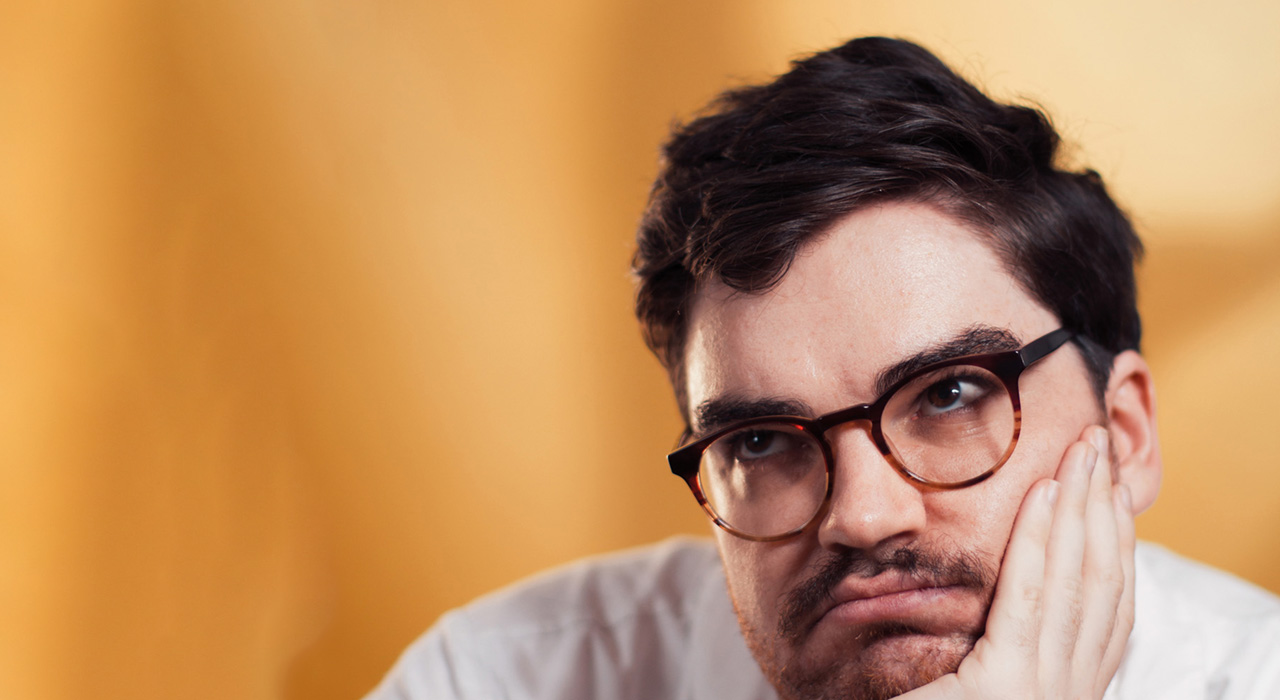Author Q&A:
Luke Healy
The Con Artists
(Faber)
Frank only wanted three things this year— to perform stand-up comedy, go to therapy, and to keep his house plants alive. Then Giorgio got hit by a bus. As Frank moves in with Giorgio to help him recover, he begins to suspect that the perfect life Giorgio has been sharing online may be nothing more than a web of lies and scams. Unable to disentangle himself from his friend’s complicated life, Frank questions whether he’s become Giorgio’s unwitting accomplice. The Con Artists is a darkly comic graphic novel about friendship, fraud, and the stories we tell about ourselves.
How did the story of The Con Artists emerge to you?
The Con Artists is inspired by some real things that happened in my own life. I was freshly living in London, trying to break into the comedy scene, when a friend of mine did have a serious accident – which is the basic set-up of the book. While it diverges more from my real life as the book goes on, many of the characters and events take some inspiration from real people and happenings.
I’ve always used writing to digest and process confusing emotions, and this book is an attempt to do that for a very strange period in my life.
Could you give us an insight into the process of creating a graphic novel? How do you bring together the words and images? Does one come before the other?
For me, the words and pictures all need to come together. After making a very loose outline, I’ll write and draw a draft of the book in a notebook, using stick figures and other shorthands. Nobody else could look at those early drafts and understand what is going on, but it works for me. And keeping things so loose means I’m not afraid to cross things out or tear out pages. Once I start drawing the nice pictures for the final book, I get way too emotionally attached to make many edits!
A lot of the themes are quite dark. Do you find that conveying them in a graphic novel style makes them any easier to discuss?
For me, the graphic novel format is the way that I can communicate that feels closest to how my brain actually works. And so it always just feels right when I want to write about intimate or very personal thoughts and feelings.
But so many graphic novels do similar. I think especially in autobiographical books, or books inspired by real life like this one, being able to see these avatars for the author can be comforting when discussing dark issues. Like: ‘Oh, they’re having a really hard time, but they’re still drawing themselves as cute little cartoons, so it can’t be that bad!’
You studied journalism. Does this inform the way you research your works or was it liberating to break free from its rules?
I think that studying journalism massively informs my work, even though I graduated more than a decade ago now. The main takeaway I have from my time as a journalist is something a professor told me in university: “Journalists are not writers, they are plumbers. The facts are like pipes, there is only one right order to put them in that will make them work. It’s not about what you think will look nice – it’s about what works.”
I still think of my writing in this way. Even when I’m working on fiction, I’m arranging the facts in the correct order – the one way that works.
Frank wants to become a famous stand-up comedian. Could he have done so if Giorgio hadn’t stepped back into his life?
I don’t think so. As much as Giorgio might be using Frank, Frank is also using Giorgio as an excuse to procrastinate. Procrastinators love a crisis – it’s the ultimate justification.
At the start of the novel Giorgio’s story seems sympathetic but this changes, and yet Frank goes out of his way to constantly be there for him. Is this a dynamic more common now when Giorgio is able to portray the “perfect life” on Instagram?
I think that it’s definitely easy to feel constantly connected to people now, with apps like Instagram – even though viewing someone’s photo isn’t really connection at all. It’s certainly not a personal connection. After all, they are probably sharing that photo with hundreds or thousands of people. I have this feeling with my own friends sometimes – that we’re very close, but then when I meet up with them in person, the relationship feels very different to the one I imagine when we’re just commenting on each other’s posts.
I think that the real reason that Frank sticks with Giorgio again and again is that they’ve been friends since childhood, and even when those relationships are toxic or difficult, the weight of time keeps them held together.
Throughout the novel the phrase “what is true in this moment” is repeated as a coping mechanism for Frank’s anxiety. What is the significance of this?
A large part of this book is inspired by real CBT and mindfulness techniques – much of the book takes place during meetings between Frank and his therapist – so that’s what inspired the inclusion of that phrase. But in a broader sense, the book is constantly daring you to ask what is the truth. Giorgio lies about his life constantly, Frank manipulates the truth in his stand-up sets, and in the introduction, I tell you that everything in the book is fictional even though it’s clearly inspired by true events.
I hope that as people read the book, and Frank asks himself “what is true?” the reader will do the same.

Leave a reply
Your email address will not be published.